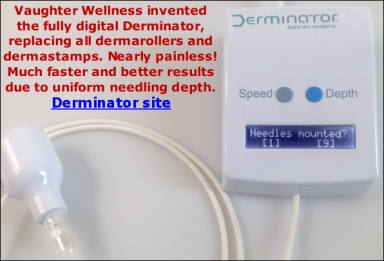He may just be misinformed. Remember - our advice is based on rigorous examination of the relevant medical literature. (A lot of recent forum postings here are basically: "Is it really true what you say about your product <x>?" and such questions are in fact off-topic on this forum). I can't spend too much time debunking whatever people claim, but of course I make mistakes too.
The table I have posted here (with a link to the entire study it is published in):
https://http://forums.owndoc.com/dermarolling-microneedling/should-vitamin-c-diy-serum-be-at-20-concentration/ ..shows the tissue levels of ascorbic acid in the skin after the topical application of ascorbic acid. The tissue levels greatly increased so it did penetrate. They mentioned that
"ascorbic acid must be formulated at pH levels less than 3.5 to enter the skin".
You can see in the data sheet about ascorbic acid in the link below that:
- A 5% solution in water has a pH of 2.2- 2.5.
- A solution of ascorbic acid in sodium hydroxide, sodium carbonate, or sodium bicarbonate has a pH of 5.5-7.0.
Source:
https://http://www.inchem.org/documents/pims/pharm/ascorbic.htm#DivisionTitle:3.3.1.3%20%20DescriptionThat is why we say in our instructions that for topical application, use pure vit. C crystals and not to use vit. C in tablets or the effervescent forms because they are usually mixed with sodium bicarbonate to enhance oral absorption and to make it less acidic. For topical application, use pure crystals of ascorbic acid and it will definitely penetrate.
Topical L-ascorbic acid: percutaneous absorption studiesPinnell SR, Yang H, Omar M, Monteiro-Riviere N, DeBuys HV, Walker LC, Wang Y, Levine M.
Duke University Medical Center, Department of Medicine, Durham, North Carolina 27707, USA.
RESULTS:
L-ascorbic acid must be formulated at pH levels less than 3.5 to enter the skin. Maximal concentration for optimal percutaneous absorption was 20%. Tissue levels were saturated after three daily applications; the half-life of tissue disappearance was about 4 days. Derivatives of ascorbic acid including magnesium ascorbyl phosphate, ascorbyl-6-palmitate, and dehydroascorbic acid did not increase skin levels of L-ascorbic acid. https://http://www.ncbi.nlm.nih.gov/pubmed/11207686BTW, a half-life of four days means that the amount of vit. C present in the skin will halve every 4 days.
A lot of disinformation is spread about ascorbic acid because as I explained in the link below, you absolutely must make the solution (diluting the crystals in water) yourself at home and not buy a prepared product. Selling plain vit. C powder or crystals is not very profitable, so the myriads of expensive vit. C products out there would have little future when the truth would be known.
https://http://forums.owndoc.com/dermarolling-microneedling/add-glycerin-into-my-diy-vitamin-cLast but not least, there are many medical studies where specific skin conditions improved after the topical application of ascorbic acid, thus it must have penetrated the skin.





